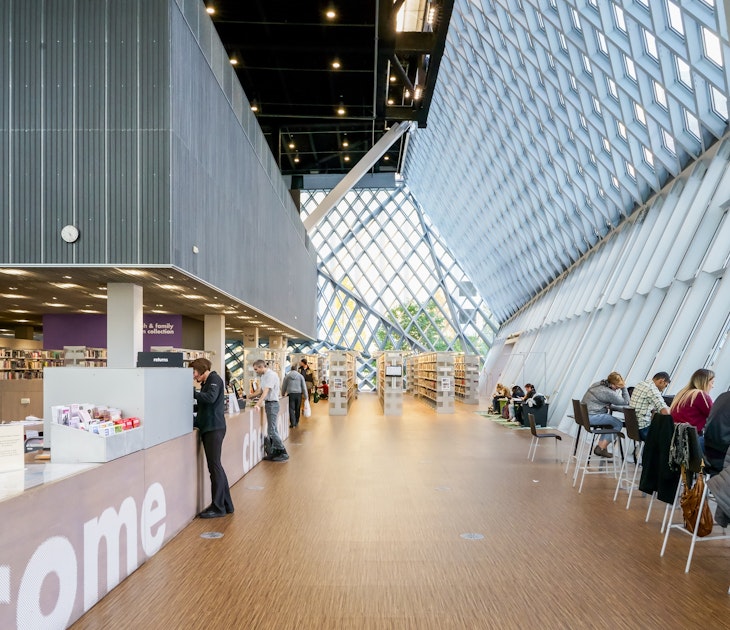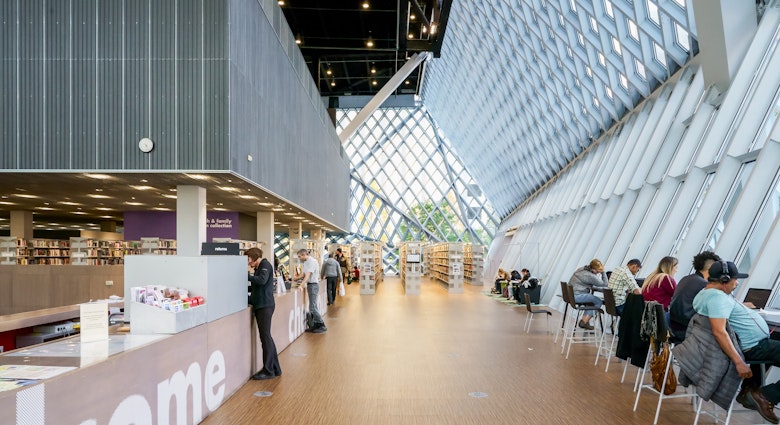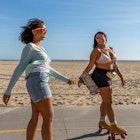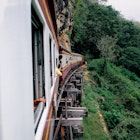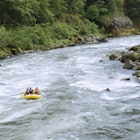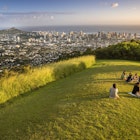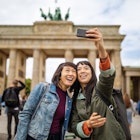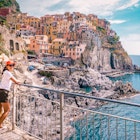You’d be wrong to assume that, should you find yourself in the once-in-a-lifetime position of gaining access to the Vatican Museums at 6 am — a full three hours before the doors open to the public — there would be any pomp and circumstance when the main entrance door along Rome’s Viale Vaticano swings open.
The door, built in 1932 and topped by Pietro Malendri-chiseled sculptures of the Vatican’s two main artistic superstars, Michelangelo (with a sculptor's mallet in his hand on the left); and Raphael (clutching his palette and brush on the right), is a grand exercise in symbolic expectation. The chiseled words above, in Latin script, are both direct and spine-tingling: Vatican Museums. It need not say more.
However, it’s just a suited security staff member who casually opens the door and says, "Buongiorno!" Were it not for the fact that the general public doesn’t actually use this door (visitors enter through a far more modern gateway a few meters to the left), it wouldn’t feel special at all.
But therein lies the rub. Entering the Vatican Museums at sunrise needs no added fanfare — the treasures awaiting in the museums, void of people and quiet enough to hear an aureus coin drop, do all the work themselves.
I’ve come to the Vatican to meet the clavigero, the official Vatican keymaster, Gianni Crea, who oversees the nearly 3000 keys that open all the doors within the Vatican Museums. Crea heads up a team of 11 clavigeri, who take turns opening and closing the various rooms of the Vatican Museums, including the Sistine Chapel, each and every day. I’m just along for the ride.
Crea, an immediately likable Italian from Calabria, shows me how the keys are kept in a special bunker nightly; and explains that there are five backups of each one. Except one — the key that unlocks the Sistine Chapel. This key is sealed in an enveloped nightly, stamped and sealed by the Swiss Guards, and locked away in the bunker. There is no backup.
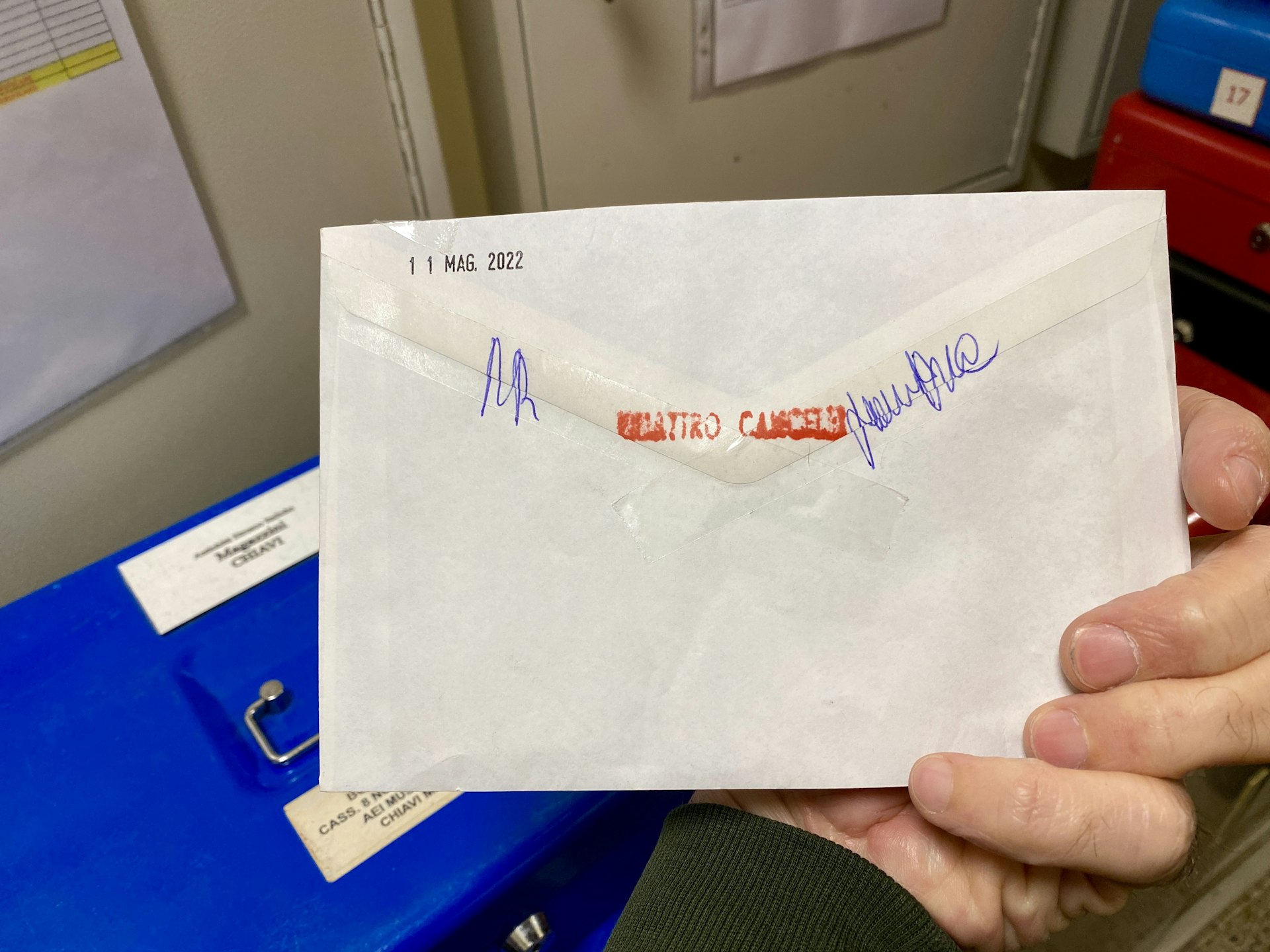
Crea hands me the envelope and I casually tuck it away in the back pocket of my jeans — it’s a long walk to the Sistine Chapel and I need my hands to take notes and snap pictures.
As we saunter through the museums, no words can describe the extraordinary experience of watching the rooms come to life at the flick of a light switch, soundtracked by Crea's spirited commentary. Inside Museo Pio-Clementino, Crea nonchalantly removes a rope and takes me behind the Laocoön, one of the most famous ancient sculptures in the world, like we are peeking behind a TV console in his living room (yes, the rumors are true — the original arm is attached to the back of the statue!). We ascend the original Bramante Staircase — closed to the public in most cases — for an extraordinary morning view across Rome. The Gallery of Maps, probably the second most dazzling gallery in the Vatican Museums after the Sistine Chapel, illuminates like the lights of Heaven’s Gate when the electricity is turned on (so astonishing, we do it twice).
Finally, we arrive at the Sistine Chapel. Crea tells me to get to it. “I’ve lost the key,” I joke. "Nooooooooooo!" says Crea with a wry smile. I turn the key to the left. The door opens. And there it is: The most legendary, most eye-popping, most creatively-astonishing room in the world. Empty — there are no words.
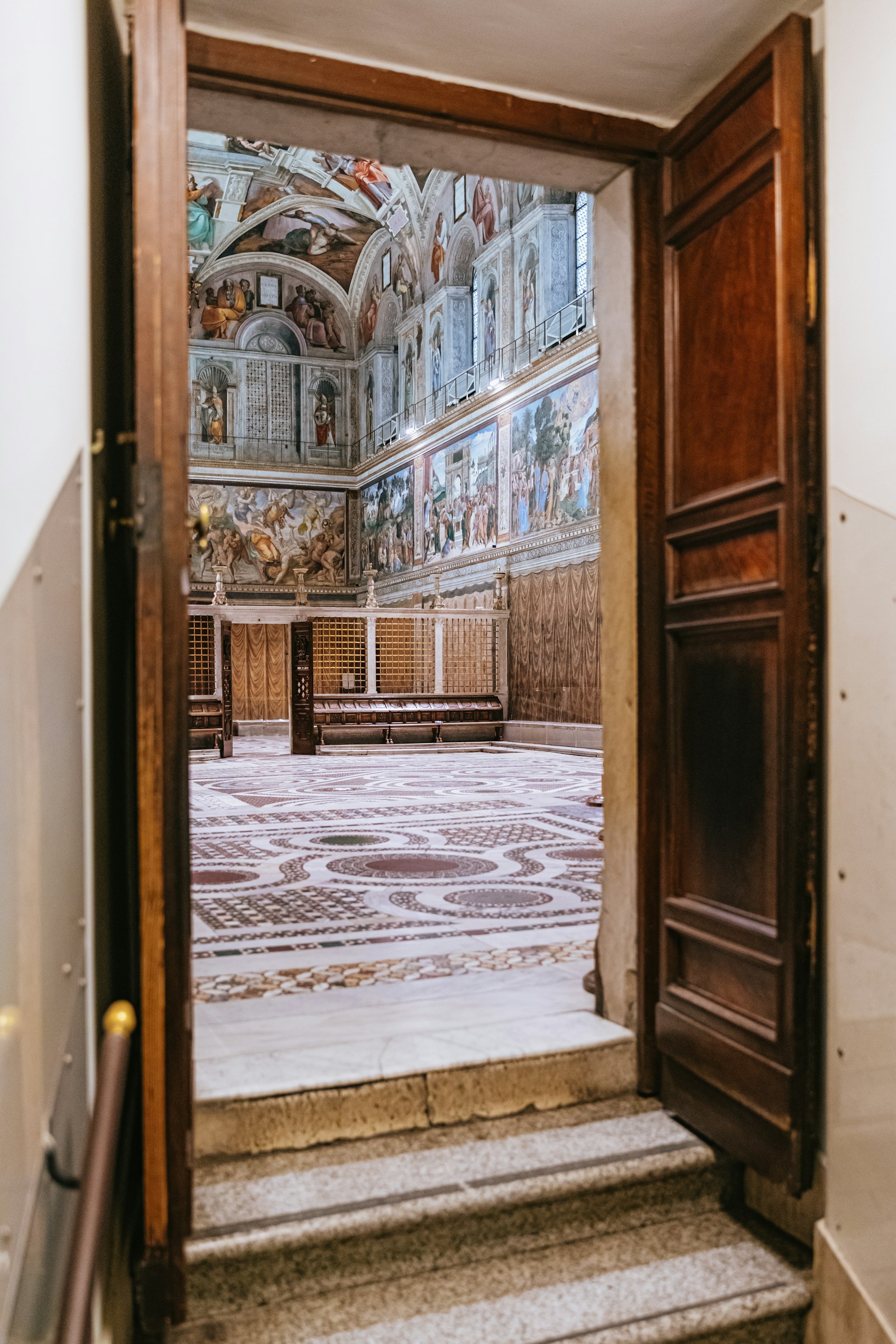
So, how can you experience this once-in-a-lifetime, clavigero-guided tour of the Vatican yourself? Well, currently, the only way is to enter GetYourGuide’s "Turning the Lights On at the Vatican Museums" contest. Other tours offer access with clavigeri, but only one will get you face-time with Crea.
But there are a lot of other fantastic ways to do the Vatican — including exclusive private tours to options that won't break the bank.
The Vatican Museums house one of the world’s most immense collections of ancient sculptures and Renaissance art — some 70,000 works in total, of which 20,000 or so are actively displayed in 24 interconnected galleries across 7 km of museum space. It’s overwhelming —and it’s crowded. Pre-COVID numbers in 2019 recorded some 6.9 million folks through the turnstiles. Is there a way to keep your sanity along the way?
Sì, signori! Depending on your budget, the options are as daunting as the museum itself.
Everything you need to know before visiting Rome
Vatican Museums on the cheap
The absolute cheapest route is booking admission tickets directly (do it well in advance, up to 60 days), which nets you an unprecedented laundry list of world-class art for less than the price of a gourmet pizza back home (adult/reduced €17/€8 plus a €4 reservation fee and optional audio guide €7). Post-COVID, booking online in advance is compulsory.
If the goal is the Sistine Chapel at its quietest, show up at least 1.5 to two hours prior to the 9 am opening to ensure a strategic position in line (keeping in mind you will not be the only person with this idea!). High tail it direct to Michaelangelo‘s masterpiece following the shortcut signage and you’ll arrive before most of the masses. Afterwards, work your way backwards to see everything you flew by when the doors opened.
You won’t have the Last Judgement to yourself, but it’s the best you can do on a budget.
Early access, semi-private and group tours
Another way to beat the crowds at the Vatican Museums are early morning and evening semi-private and group tours. The Vatican itself offers both a Prime and Prime VIP Experiences, both of which tour the museum one hour before opening. Though you won’t get the clavigero as your tour guide, you will be led by an authorized educational guide who will notably enhance your overall experience.
The difference between the two experiences is group size and price: Prime groups host up to 25 people for €63 per person. The Prime VIP limits the group to 10 for €45 per person; both tours include breakfast and a guided tour through the Upper Galleries (Candelabras, Geographical Maps, and Tapestries), the Raphael Rooms and the Sistine Chapel. Other parts of the Museums may be visited without the guide after breakfast during normal opening hours.
Various independent tour companies offer similar early access and night tour options ranging in price between €50 and €100; and of course semi-private and group tours are available throughout the day as well. Skip-the-Line access for St. Peter’s Basilica is often offered as well.
Private tours of the Vatican
Private tours of the Vatican are similar in style to semi-private and group tours, but are just for you and yours. They will usually involve entering one hour before opening time, include breakfast in the Pinecone Courtyard, and feature a dedicated guide. Most options settle in around €150 to €250 per person.
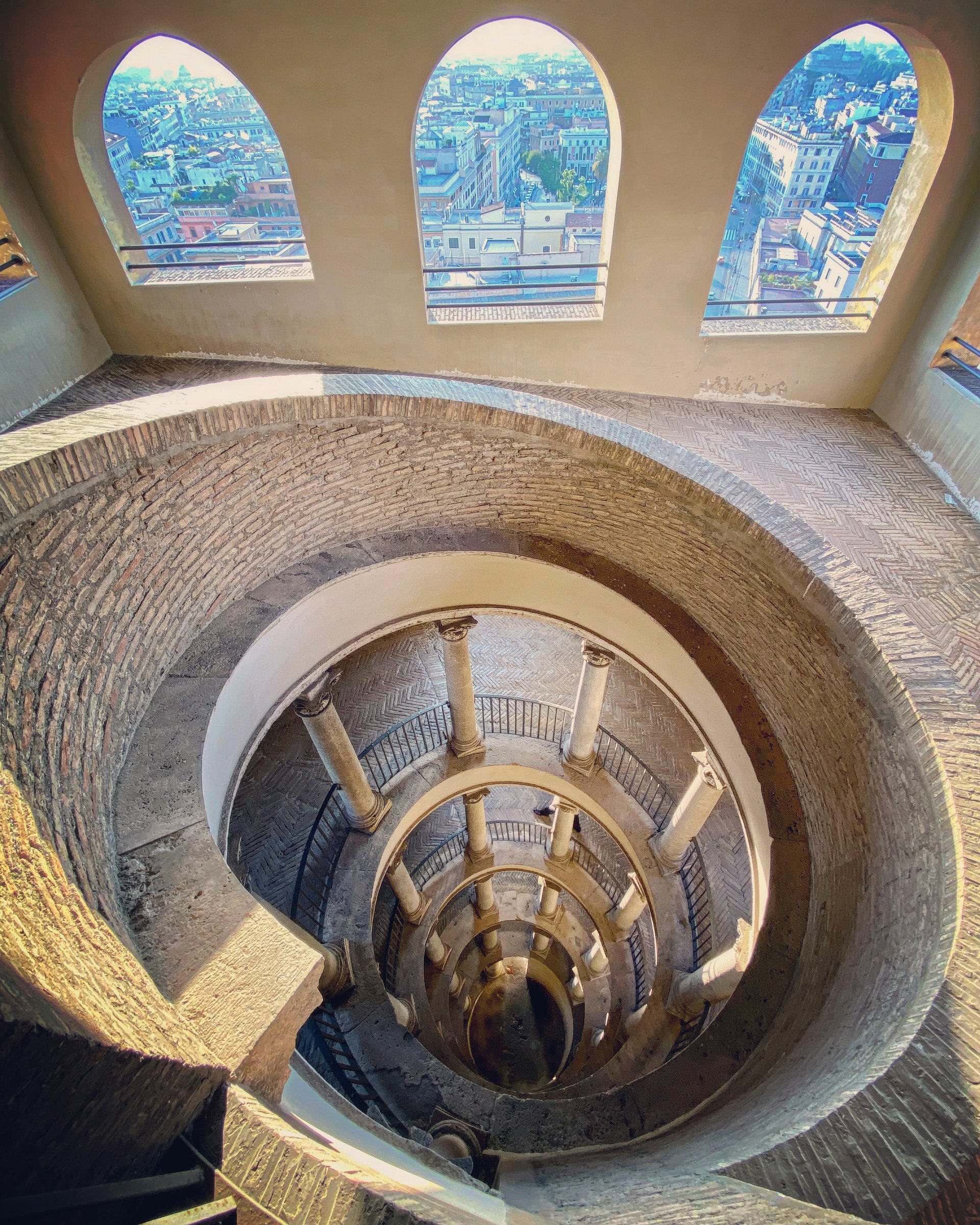
Some of these tours will even including off limit highlights, such as the original Bramante Staircase, and sometimes explore deeper into galleries that other tours cast but a tertiary glance.
If you are looking to unlock your way to the Sistine Chapel with a clavigero, that’s possible, too, with numerous private companies offering the experience from around €300 per person and up (options with UK-based True Travel, who includes the experience has part of a broader package that includes hotel accommodation, transfers and other sightseeing experiences, start from €2500 to €3000 for two people).
You won’t get the boss (Crea) — one of his staff usually leads these tours — or his remarkable stories. But you will experience the Vatican Museums like few others have.


